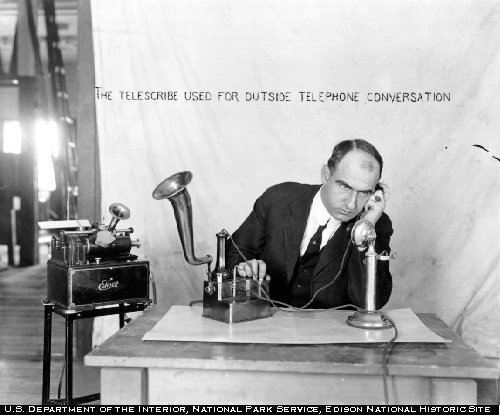Edison, not to be outdone by the Telegraphone, in 1914 announced the Telescribe, a simple device to record telephone conversations using wax cylinders. The Telescribe was based on a design similar to the current generation of Edison dictation machines. It sold in small numbers before being replaced by a much improved Edison telephone recorder called the Telediphone.
By the 1920s, there were two very different attitudes among what we would today call telephone service providers in Europe versus the United States. In Europe, various inventors and companies seemed enthusiastic about using telephone recorders and automatic answering machines, despite the ongoing technical problems. In the United States, AT&T had by now consolidated its near-monopoly and had started excluding all forms of “foreign” equipment on its lines (“foreign” being defined as not made by Western Electric or an approved partner)
Inventors like Truman Stevens and others introduced and patented improved automatic answering machines in the U.S., but AT&T did little to encourage them. As phonograph technology improved, so too did telephone recording. 1932 saw the introduction of a disc-based answering machine by the Loftin-White laboratories in New York (an engineering firm in the radio industry).
